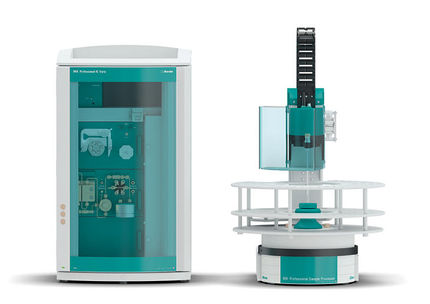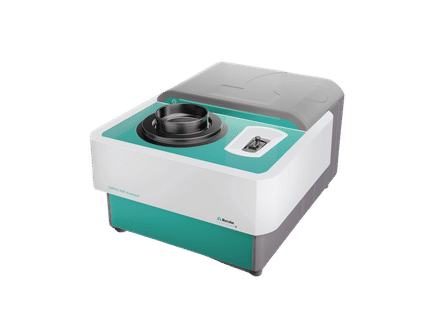Gonadotropin-releasing hormone receptor
| Gonadotropin-releasing hormone receptor
|
| Identifiers
|
| Symbol
| GNRHR
|
| Alt. Symbols
| GnRH-R; LRHR;
|
| Entrez
| 2798
|
| HUGO
| 4421
|
| OMIM
| 138850
|
| RefSeq
| NM_000406
|
| UniProt
| P30968
|
| Other data
|
| Locus
| Chr. 4 q21.2
|
| Gonadotropin-releasing hormone (type 2) receptor 2
|
| Identifiers
|
| Symbol
| GNRHR2
|
| Entrez
| 114814
|
| HUGO
| 16341
|
| RefSeq
| NR_002328
|
| UniProt
| Q96P88
|
| Other data
|
| Locus
| Chr. 1 q12
|
The gonadotropin-releasing hormone receptor (GNRHR), also known as the luteinizing hormone releasing hormone receptor (LHRHR), is a member of the seven-transmembrane, G-protein coupled receptor (GPCR) family. It is expressed on the surface of pituitary gonadotrope cells as well as lymphocytes, breast, ovary, and prostate.
This receptor is a 60 kDa G protein-coupled receptor and resides primarily in the pituitary and is responsible for eliciting the actions of LHRH after its release from the hypothalamus.[1] Upon activation, the LHRHr stimulates tyrosine phosphatase and elicits the release of LH from the pituitary.
Evidence exists showing the presence of LHRH and its receptor in extrapituitary tissues as well as a role in progression of some cancers.[2]
Function
Following binding of Gonadotropin releasing hormone (GNRH), GNRHR associates with G-proteins that activate a phosphatidylinositol (PtdIns)-calcium second messenger system. Activation of GNRHR ultimately causes the release of follicle stimulating hormone (FSH) and luteinizing hormone (LH).
Gene
There are two major forms of the GNRHR, each encoded by a separate receptor (GNRHR, GNRHR2).[3][4]
Alternative splicing of the GNRHR gene, GNRHR, results in multiple transcript variants encoding different isoforms. More than 18 transcription initiation sites in the 5' region and multiple polyA signals in the 3' region have been identified for GNRHR.
Regulation
The GNRHR responds to GNRH as well as to synthetic GNRH agonists. Agonists stimulate the receptor, however prolonged exposure leads to a downregulation effect resulting in hypogonadism, an effect that is often medically utilized. GNRH antagonists block the receptor and inhibit gonadotropin release. GNRHRs are further regulated by the presence of sex hormones, inhibin, and activin.
Clinical implications
Defects in the GNRHR are a cause of hypogonadotropic hypogonadism (HH).[5]
References
- ^ Millar RP (2005). "GnRHs and GnRH receptors". Anim. Reprod. Sci. 88 (1-2): 5–28. doi:10.1016/j.anireprosci.2005.05.032. PMID 16140177.
- ^ Harrison GS, Wierman ME, Nett TM, Glode LM (2004). "Gonadotropin-releasing hormone and its receptor in normal and malignant cells". Endocr. Relat. Cancer 11 (4): 725–48. doi:10.1677/erc.1.00777. PMID 15613448.
- ^ Neill JD, Musgrove LC, Duck LW (2004). "Newly recognized GnRH receptors: function and relative role". Trends Endocrinol. Metab. 15 (8): 383–92. doi:10.1016/j.tem.2004.08.005. PMID 15380810.
- ^ Cheng CK, Leung PC (2005). "Molecular biology of gonadotropin-releasing hormone (GnRH)-I, GnRH-II, and their receptors in humans". Endocr. Rev. 26 (2): 283–306. doi:10.1210/er.2003-0039. PMID 15561800.
- ^ Layman LC (2007). "Hypogonadotropic hypogonadism". Endocrinol. Metab. Clin. North Am. 36 (2): 283–96. doi:10.1016/j.ecl.2007.03.010. PMID 17543719.
| Transmembrane receptor: G protein-coupled receptors |
|---|
| Class A: Rhodopsin like | Acetylcholine (M1, M2, M3, M4, M5) - Adrenergic (α1 (A, B, D), α2 (A, B, C), β1, β2, β3) - Adrenomedullin - Anaphylatoxin (C3a, C5a) - Angiotensin (1, 2) - Apelin - Bile acid - Bombesin (BRS3, GRPR, NMBR) - Bradykinin (B1, B2) - Cannabinoid (CB1, CB2) - Chemokine - Cholecystokinin (A, B) - Dopamine (D1, D2, D3, D4, D5) - Eicosanoid (CysLT (1, 2), LTB4 (1, 2), FPRL1, OXE, Prostaglandin ((DP (1, 2), EP (1, 2, 3, 4), PGF, Prostacyclin, Thromboxane) - EBI2 - Endothelin (A, B) - Estrogen - Formyl peptide (1, L1, L2) - Free fatty acid (1, 2, 3, 4) - FSH - Galanin (1, 2, 3) - Gonadotropin-releasing hormone (1, 2) - GPR (1, 3, 4, 6, 12, 15, 17, 18, 19, 20, 21, 22, 23, 25, 26, 27, 31, 32, 33, 34, 35, 37, 39, 42, 44, 45, 50, 52, 55, 61, 62, 63, 65, 68, 75, 77, 78, 79, 82, 83, 84, 85, 87, 88, 92, 101, 103, 119, 120, 132, 135, 139, 141, 142, 146, 148, 149, 150, 151, 152, 153, 160, 161, 162, 171, 172, 173, 174, 176, 182) - Ghrelin - Histamine (H1, H2, H3, H4) - Kisspeptin - Luteinizing hormone/choriogonadotropin - Lysophospholipid (1, 2, 3, 4, 5, 6, 7, 8) - MAS (1, 1L, D, E, F, G, X1, X2, X3, X4) - Melanocortin (1, 2, 3, 4, 5) - MCHR (1, 2) - Melatonin (1A, 1B)- Motilin - neuromedin (B, U (1, 2)) - Neuropeptide (B/W (1, 2), FF (1, 2), S, Y (1, 2, 4, 5)) - Neurotensin (1, 2) - Opioid (Delta, Kappa, Mu, Nociceptin, but not Sigma) - Olfactory - Opsin (3, 4, 5, 1LW, 1MW, 1SW, RGR, RRH) - Orexin (1, 2) - Oxytocin - Oxoglutarate - PAF - Prokineticin (1, 2) - Prolactin-releasing peptide - Protease-activated (1, 2, 3, 4) - Purinergics (Adenosine (A1, A2a, A2b, A3), P2Y, (1, 2, 4, 5, 6, 8, 9, 10, 11, 12, 13, 14)) - Relaxin (1, 2, 3, 4) - Somatostatin (1, 2, 3, 4, 5) - Serotonin, all but 5-HT3 (5-HT1 (A, B, D, E, F), 5-HT2 (A, B, C), 5-HT (4, 5A, 6, 7)) - SREB - Succinate - TAAR (1, 2, 3, 5, 6, 8, 9) - Tachykinin (1, 2, 3) - Thyrotropin - Thyrotropin-releasing hormone - Urotensin-II - Vasopressin (1A, 1B, 2) |
|---|
| Class B: Secretin like | Brain-specific angiogenesis inhibitor (1, 2, 3) - Cadherin (1, 2, 3) - Calcitonin - CD97 - Corticotropin-releasing hormone (1, 2) - EMR (1, 2, 3) - Glucagon (GR, GIPR, GLP1R, GLP2R) - Growth hormone releasing hormone - PACAPR1- GPR (56, 64, 97, 98, 110, 111, 112, 113, 114, 115, 116, 123, 124, 125, 126, 128, 133, 143, 144, 157) - Latrophilin (1, 2, 3, ELTD1) - Parathyroid hormone (1, 2) - Secretin - Vasoactive intestinal peptide (1, 2) |
|---|
| Class C: Metabotropic glutamate / pheromone | Calcium-sensing receptor - GABA B (1, 2) - Glutamate receptor (Metabotropic glutamate (1, 2, 3, 4, 5, 6, 7, 8)) - GPRC6A - GPR (156, 158, 179) - RAIG (1, 2, 3, 4) - Taste receptors (TAS1R (1, 2, 3) TAS2R (1, 3, 4, 5, 8, 9, 10, 12, 13, 14, 16, 38, 39, 40, 41, 43, 44, 45, 46, 47, 48, 49, 50)) |
|---|
| Frizzled / Smoothened | Frizzled (1, 2, 3, 4, 5, 6, 7, 8, 9, 10) - Smoothened |
|---|
| Sex hormones and related agents (primarily G03, also L02, H01C) - human endogenous in CAPS |
|---|
Progestogens:
(receptor) | PROGESTERONE, Desogestrel, Drospirenone, Dydrogesterone, Ethisterone, Etonogestrel, Ethynodiol diacetate, Gestodene, Gestonorone, Levonorgestrel, Lynestrenol, Medroxyprogesterone, Megestrol, Norelgestromin,
Norethisterone, Norethynodrel, Norgestimate, Norgestrel, Norgestrienone, Tibolone
Selective progesterone receptor modulator: Asoprisnil, CDB-4124
Antiprogestogen: Mifepristone |
|---|
Androgens:
(receptor) | TESTOSTERONE, Androstanolone, Fluoxymesterone, Mesterolone, Methyltestosterone, (see also anabolic steroids)
Antiandrogens: Bicalutamide, Cyproterone, Flutamide, Nilutamide, Spironolactone |
|---|
Estrogens:
(receptor) | ESTRADIOL, ESTRIOL, ESTRONE, Chlorotrianisene, Dienestrol, Diethylstilbestrol, Ethinylestradiol, Fosfestrol, Mestranol, Polyestradiol phosphate
Selective estrogen receptor modulator: Bazedoxifene, Clomifene, Fulvestrant, Lasofoxifene, Raloxifene, Tamoxifen, Toremifene
Aromatase inhibitor: Aminogluthetimide, Anastrozole, Exemestane, Formestane, Letrozole, Vorozole |
|---|
Gonadotropins:
(FSHR/LHCGR) | ovulation stim.: Clomifene, Urofollitropin
Antigonadotropins:
Danazol, Gestrinone |
|---|
GnRH:
(receptor) | agonist: Buserelin, Goserelin, Histrelin, Leuprorelin, Nafarelin, Triptorelin
antagonist:
Abarelix, Cetrorelix, Ganirelix |
|---|
|







